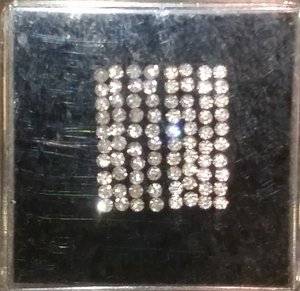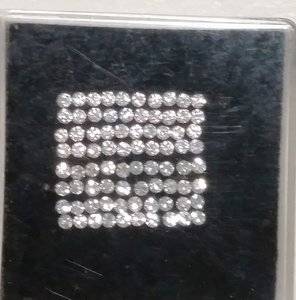blueMA
Brilliant_Rock
- Joined
- Aug 10, 2005
- Messages
- 1,257
It is a human obstruction ASET I also desiged and tested in 2006.Garry, would you elaborate please?
It is a human obstruction ASET I also desiged and tested in 2006.
AGS made the blue too large - they assumed a cyclops, and we each have an eye close to the side of our head. The stripe inside is the human body. I developed and tested it on shallow stones to get an idea about the effects of looking at earrings and pendants.
Thoiught it answered Karl's line of comments rather well
https://www.diamond-cut.com.au/13_scint.htm is what I wrote 19 years ago, and largely valid today.I do find HCA very useful while searching for diamonds so I'm grateful of the availability of the tool. I often find a diamond of interest get penalized for spread that I tend to accept as long as it's within the AGS ideals, but when a diamond gets penalized for the scintillation it tends to concern me. Would you please explain the science behind determining the scintillation score?
Blah blah blah. Blue Ma 41 is not a limit if you reduce crown angle.This explains exactly why the HCA could be overly harsh for diamonds with pavilion angles of 41 and just over. The predictor model assumes increased chance of ring light leakage and thinning star pattern as the lower girdle length increases, but this isn't necessarily so in well cut diamonds with balanced star patterns. This means I can easily rule this out as well with access to ASET and Idealscope images. Thanks!
Exactly my point! I’m rather fond of 41 pavilion with appropriate shallower crown.Blah blah blah. Blue Ma 41 is not a limit if you reduce crown angle.
It's true, many of my play H&A CZs and moissanites also look awesome under certain lighting, but I can easily spot them in more common lighting environment. I covet laser beam off diamonds and sharp on/off scintillation of well-cut diamonds, so I tend to aim for ideal cut rocks.
My wife and I are solidly in your camp BlueMA. She wears a pair of CBI earrings that are half a carat each. It is rare that someone does not comment to her, often total strangers, on how incredibly sparkly they are.
Wink
It is a bit OT Wink, but here they are:A little off topic, but several years ago, Garry showed me two glass topped containers each with a fairly large number of one or two point diamonds in them. Garry will remember the size and the number of diamonds in them much better than I.
He showed them to me and asked me which I thought was the most beautiful collection. I favored one box and was surprised to learn that it contained only well cut single cuts and the other, contained very well cut full cut round brilliants.
Once he explained it to me, it fit right in with what I tell my clients. The single cuts (seventeen facets instead of 57) allowed for virtual larger facets, which set up larger flashes of both white and colored light. It is the size of these virtual facets, whether in small or large diamonds that determines the beauty to the eye of the observer. In slightly larger diamonds, the 57 facet diamond adds a wonderful dazzling sparkle when properly cut, but in tiny diamonds, they are too small to be fully appreciated by the human eye.
One thing I have learned about Garry Holloway, he always makes me think!
Wink

